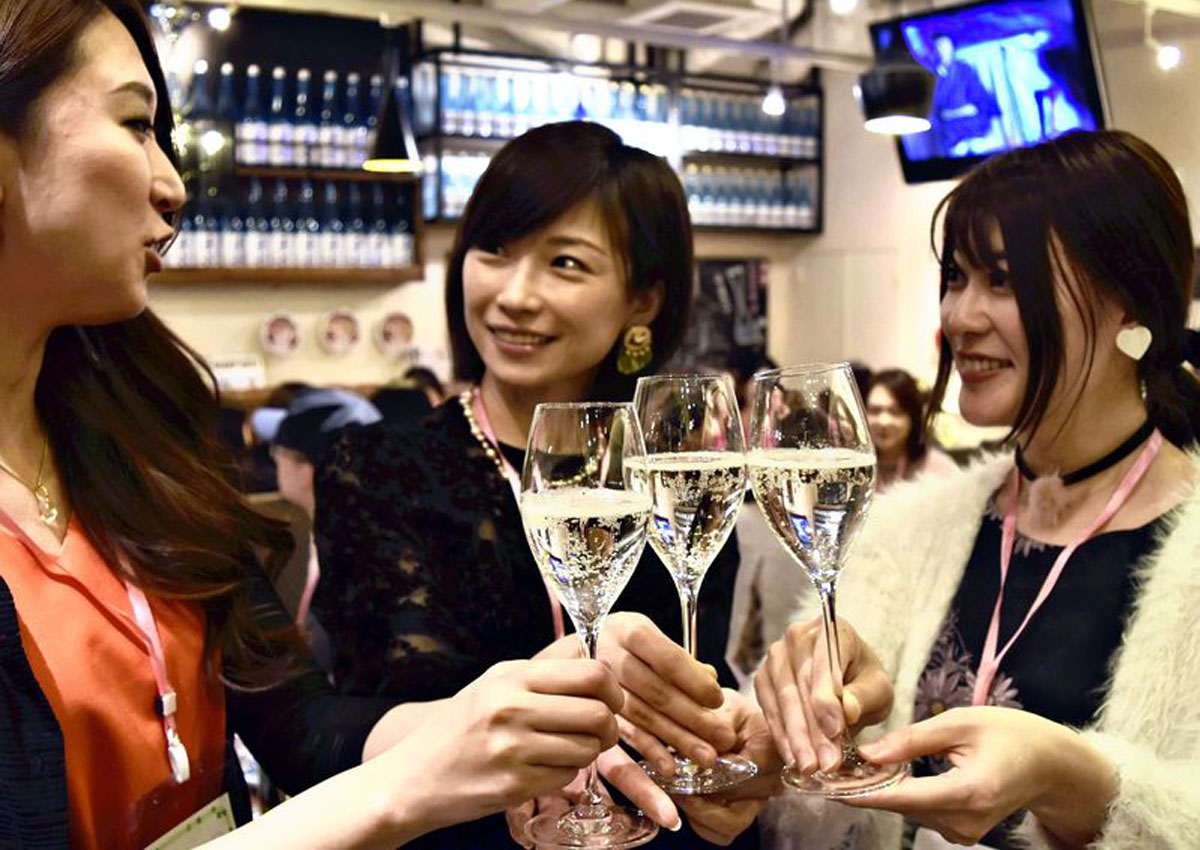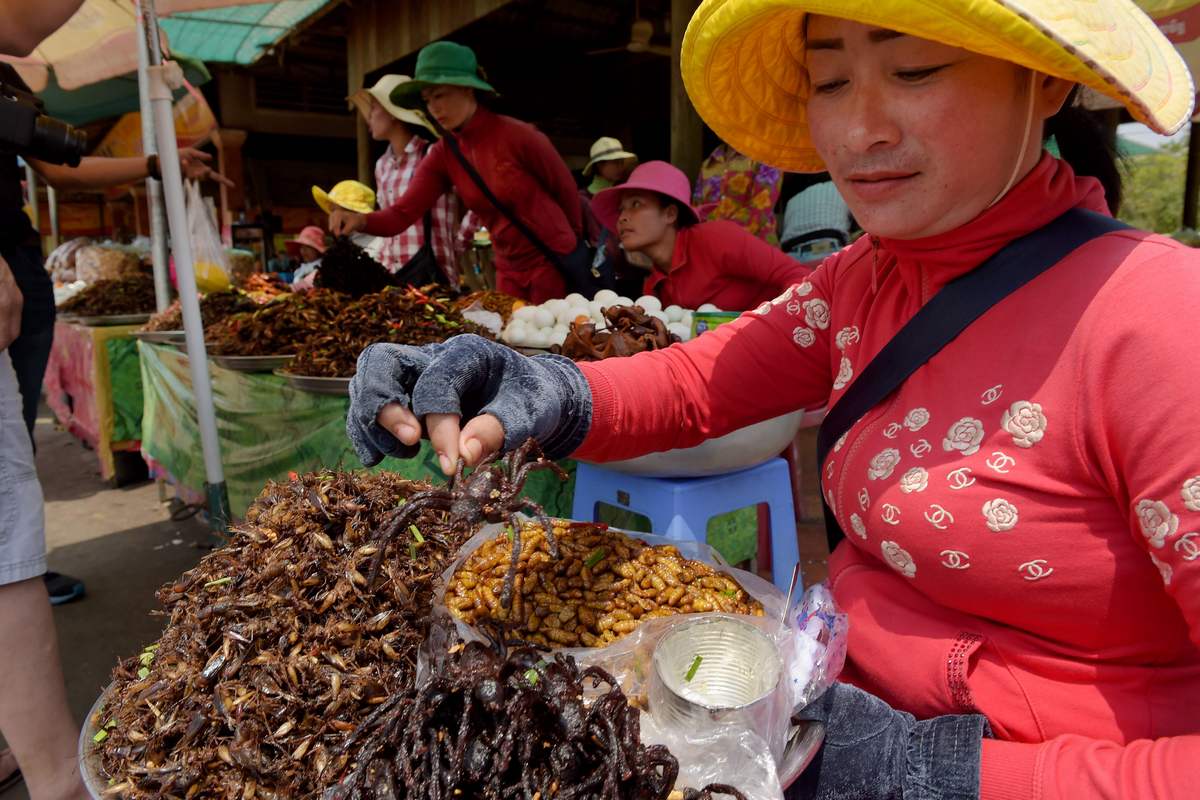Sparkling sake vies to become toast of choice

The popularity of smooth, sweet sparkling sake is bubbling over in Japan.
Since Miyagi Prefecture-based brewery Ichinokura Co. pioneered the fizzy Suzune in 1998, the country’s sake makers have released various types of sparkling sake, including Mio from Kyoto-based Takara Shuzo Co.
Presented in small, stylish bottles, many kinds of sparkling sake are only about 5 per cent alcohol – lower than the 15 per cent of typical sake – making it a popular choice among women.
Brewers say the variety is also aimed at younger generations who are not familiar with sake, and is helping to expand the fan base of Japan’s traditional tipple.
At the second anniversary party in early December of Nihonshu Joshikai, a group established in 2015 for women to enjoy sake, attendees chatted to each other while holding wineglasses filled with fizzy sake.
The group organises events such as sake brewery tours and cherry-blossom viewings. There are about 300 members aged from their 20s to their 50s.
“We often toast with refreshing, sparkling sake when we have festive meetings,” said group leader Aimee Ujiie, 32.
A 24-year-old civil servant from Saitama Prefecture said, “I often buy sparkling sake at convenience stores on my way home from work and drink it at home.”
There are two main ways sparkling sake is made. One is to bottle sake in the middle of the fermenting process, then add more yeast for a secondary fermentation, keeping the carbon-rich gas that is generated sealed inside the bottle. The other major method is to carbonate already fermented sake.
An additional method is to make nigorizake activated sake, which is only roughly refined and continues fermenting inside the bottle.
In light of their expected foray into overseas markets in the future, some sake makers have developed champagne-like sake that is clear and only mildly bubbly.
One is Takizawa Brewing Co.’s Kikuizumi Hitosuji, which was released in 2016. The Saitama Prefecture-based company’s brewmaster Hideyuki Takizawa, 46, spent about eight years developing the product. He used the word hitosuji – meaning a straight line – in the name, as the bubbles of this sake rise from the bottom of the glass in a straight line.
In the same year, Takizawa established the Japan Awasake Association with Nagai Sake Inc. President Noriyoshi Nagai, 45, and other brewers. In the hopes of someday pitching their products overseas, the association independently certifies sake as awasake if it meets criteria such as having carbon dioxide resulting only from natural fermentation, a clear liquid, and alcohol content of 10 per cent or more.
“I hope that one day people all over the world choose sparkling sake to make celebratory toasts,” Nagai said.
Jun Koike, editor of the online publication Saketimes, said: “Due to the long-term efforts of sake breweries, brewing technologies have tremendously improved. There has never been such a diverse range of sake available.”
A world of delicate, refined Japanese sake – with various tastes such as clear and dry, sweet and full-bodied, vintage and sparkling – is expected to continue evolving.
COCKTAILS WITH JAPANESE TOUCH
Sake-based cocktails are also becoming popular.
The Aurora Sky Lounge at the Keio Plaza Hotel Tokyo in Nishishinjuku, Tokyo, offers a cocktail that contains with a piece of pickled cherry blossom and sparkling sake mixed with peach juice.
“They seem to be pretty popular with customers from overseas,” said bartender Motoi Nishida.
Kiku-Masamune Brewing Co., based in Kobe, introduces easy-to-make cocktail recipes on its website.
Tomomi Seki, a sake writer and sommelier, said: “Sake can be enjoyed in various ways. Try many different kinds to find the one that suits you.”
HOT SAKE WITH A TWIST OF TEA
With the coldest days of winter upon us, the season for warm sake has arrived.
According to a researcher from the Kobe-based Hakutsuru Sake Brewing Co., warming some kinds of sake enhances them, giving them a full-bodied aroma and a more mellow flavor. Warm sake is classified by temperature, with hinata-kan about 30 C, hitohada-kan about 35 C, nuru-kan about 40 C, jo-kan about 45 C, atsu-kan about 50 C and tobikiri-kan about 55 C or higher. The suffix “kan” means moderately warming sake in a container.
Marie Chiba, manager of the sake bar GEM by moto in Ebisu, Tokyo, recommends brewing hojicha tea with heated sake instead of hot water. The fragrance of hojicha and the acidity of sake create a balanced flavor.”It’s easy to make at home. I highly recommend it,” Chiba said.
Published at Fri, 12 Jan 2018 13:00:10 +0000




